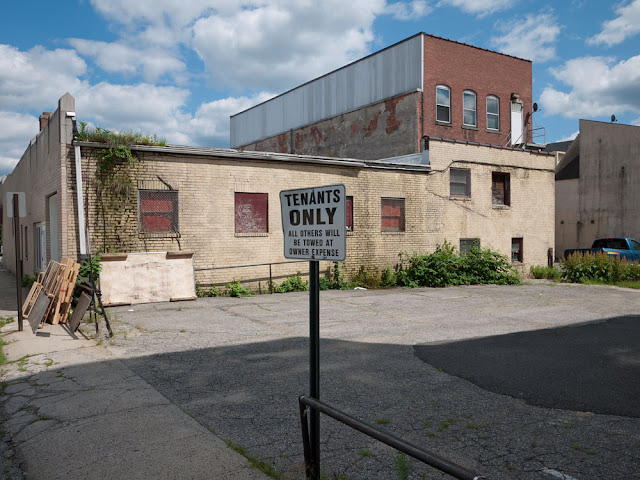Torrington, Connecticut
So, what made me decide yesterday to write about the decision-making process to buy, or not to buy, a new digital camera? Well, because I just bought a new digital camera.
Before dealing with that, I want to give a little background on how I approach this decision process. I began to work with digital imaging just about twenty years ago—Photoshop 3.1, as I recall. This was long before digital capture, and the digital work I was doing was more as freelance graphic designer than as freelance photographer. Before long though, desktop scanning had reached a level where it was appropriate for some commercial publications. I began to do projects where I spent a lot more time working in Photoshop and Quark than out on location shooting the pictures. However, when digital capture at reproduction quality did come on the scene, I was not an early adopter. I was doing a lot of self-assigned “documentary landscape” projects in large and ultra-large format, some design work, and not a large volume of assignment photography. Given the cost of the early professional quality dSLR cameras, I reasoned that I’d never amortize one of the damn things. I’d be using it not to earn a living, but to pay for the camera.
So I didn’t dive in, but I did get my toes wet using a succession of little Fuji digicams. I found that a small digital camera made a very useful accessory for a large format photographer. For one example, if you spend a week on the road working with view cameras in four different formats, it’s a big job to track and identify subjects and match them to all those individual pieces of film coming out of the darkroom in the weeks after you return. Using the digicam as a visual notebook to augment my written notes was a big help. After making a shot with one of the view cameras, step back and snap the scene, including a corner of the camera (to know which format’s being used), picking up an automatic time/date stamp to correlate to the written shooting log. Is there a park sign with information about the subject of the picture or its surroundings? Snap it. Spot a historical information plaque at the edge of town as you’re leaving? Stop and snap it.
Then early in 2004 I had to make a decision to which the answer was yes, but which yes? A long-time client landed a big production, a large-format book of do-it-yourself bathroom remodeling projects. Not exactly exciting, but a great deal of work, mine for the taking, except the publisher insisted that everything except the twelve full page chapter lede illustrations had to be done with digital capture. There would be no budget for film/processing/separations, except for the oversize full page shots to be done on two-and-a-quarter chrome film. By now, the price of dSLRs had come down a lot, and it wouldn’t even take one of the most expensive models to produce files entirely appropriate for the job. There was also time for me to research which camera to buy, replace my antique copy of Photoshop with the newly released Creative Suite I, replace my PowerBook with one that could run CS, and come up to speed on Raw file workflow, before we’d go into production in the summer.
The first surprise I found was that despite a cabinet full of Nikon gear, there was really almost no legacy advantage to be had. Meanwhile, I was totally intrigued by the new 4/3s format with its “designed from the ground up for digital capture” concept. I also found the Olympus E1 to be a delightful camera, and the 14-54 and 11-22 lenses were excellent. On top of that, Olympus was ahead of everyone on weather sealing and sensor self-cleaning, which were huge issues given that I’d be doing most of the work in environments filled with everything from sawdust to wallboard mud. So those were the factors that led me to decide on the E1. The files were only 5 megapixels, but we decided to double-shoot those large lede pictures using my Hasselblad and then the E1—we ended up producing almost all of the chapter openers from the E1 files.
I managed to go nearly three years before having to make the next new camera decision, which I’ll get to in another post.

















































